Tomato Pink Flamingo: benefits, cultivation and variety reviews
Juicy and ripe are the favorite summer delicacies. tomato... Tomatoes grown with their own hands on a backyard are especially appreciated. Among the large number, the original variety - Pink Flamingo - is distinguished by the variety in volume and appearance. But before you start looking on store shelves and on the Internet on seed sites, it is recommended that you familiarize yourself not only with the description of the species, but also with the method of its cultivation.
Content:
- The main characteristics of the variety
- All about growing seedlings
- Transplanting seedlings into the ground
- How to properly care for tomatoes?
- The consequences of improper care
- Disease and pest control
- Benefits and reviews of the variety
The main characteristics of the variety
Tomato "Pink Flamingo" - claims to be one of the most favorite tomato gardeners. The seeds for planting this vegetable are harvested from the 2nd and 3rd cluster, which reaches full maturity.
The advantage of the variety is that when exposed to heat treatment, the taste is not lost.
This makes the species an original tomato variety, not a hybrid. When collecting planting material from fruits that have reached maturity, the seeds can be planted the next year and get full-fledged plants. While it is impossible to re-grow seeds from a hybrid and repeat the original result the next year.
Features of the variety:
- Pink flamingos are directly attributed to indeterminate plants. This is due to the fact that the growth of its stems and foliage does not stop either at the time of the ovary of inflorescences or at the time of harvesting and continues until the very removal of the shrub. Knowing this nuance, it is necessary to immediately carry out the garter of the plant from a small sprout. On average, tomato lashes can reach 2 meters. Therefore, the formation of bushes and a garter in this case is required.
- The ripening period for the shrub is considered mid-season, due to the fact that the period from the germination of sprouts to the moment the first red berries are harvested takes from 110 days to 115 days. Under favorable conditions, some tomatoes can ripen much earlier, usually after 95 days.
- The fruits are very similar in appearance to a large plum, in terms of density they are medium. Pink flamingo differs from other types of tomatoes in that it does not have a green spot at the place of attachment of the stalk. The color is evenly distributed throughout the tomato.
- The weight of a tomato can vary from 140 to 200 grams. It is because of this weight that the variety is listed as large-fruited. Its external color is pink, but the color tone can vary from lighter to saturated. It depends on the growing conditions.
- Among other varieties, Pink Flamingo stands out for its specific taste characteristics - the fruits of the plant are very sweet, endowed with a large amount of juice.
The fruit is best eaten raw. They make delicious fresh salads, slicing for the main course.The tomato can also be used for canning.
All about growing seedlings
Any types of tomato are quite demanding on the composition of the soil and its acidity. The pink flamingo is no exception. In order to grow decent seedlings, you need to try.
When choosing the soil in which the planting material will be grown, it is initially worth checking its fertility and the presence of nutrients. If the land is poor or there is a lack of vitamins and minerals, it is recommended to feed the soil before planting. This must be done 30-40 days before the planned planting of seed.
The soil in which the seeds are planned to be planted should have a loose structure that allows moisture and air to pass through well.
The best option for planting in the ground would be a soil substrate in which legumes were previously grown or carrot... The deepening of the acquired seeds should be carried out no earlier than the last days of March or in the first decade of April. Before planting, the seeds should be pretreated in a weak solution of potassium permanganate for 12 hours. This procedure helps to disinfect the planting material and get rid of possible diseases.
During soaking, it is necessary to prepare a container for disembarkation. For this, the following are suitable:
Cassette;
- Small pots.
- Rectangular drawer.
- Large flowerpot.
- Cut-off plastic bottles.
- Plastic cups.
It is also recommended to disinfect flowerpots and wipe dry. Before placing the soil in the container, drainage holes should be made so as not to provoke stagnation of moisture and decay of the developed rhizomes. Self-prepared or purchased land is poured into the container. On the surface of the soil, grooves are drawn no deeper than 1 cm, into which the soaked seeds are poured. It is best if the seedlings are not often poured, but somewhat scattered along the groove.
The best option would be to independently spread the seeds at a distance of 3-5 cm from each other. This is necessary so that the sprouted shoots do not interfere with each other, and it is convenient to transplant them into open ground. After placing the seedlings, the soil is sprayed with a spray bottle and covered with a plastic bag or film on top.
For fast germination of seeds, the ideal temperature is +25 C.
Lighting should not be bright, but crops should not be shaded either. If you adhere to such conditions. Then the first shoots will appear in 5-7 days. After pecking the sprouts, the film is immediately removed and gradually begin to reduce the temperature regime, lowering the degrees in the room to +15 .. + 18 C, while lighting is added.
So that the sprouts do not stretch too much towards the sunlight, the air temperature is lowered to + 10 C. At the same time, the flowerpots with planting material are turned no more often than once every 3 days. This is necessary so that the seedlings grow the same, and not one-sided, turned in one direction.
Transplanting seedlings into the ground
Pink flamingos are transplanted from a common flowerpot into separate containers (dives) upon reaching the sprout of 2 full-fledged leaves. It is best to place them in peat or paper cups.
This is due to the fact that when the seedlings reach the optimal size, the bush does not need to be removed from its home, injuring the root system. It is simply placed in a peat pot or paper flowerpot on a prepared bed. As it grows and is exposed to moisture, paper or peat decomposes, adding additional nutrients to the soil.
The finished plant is planted to a permanent place of residence (in open ground or a greenhouse) when the seedlings reach 65-70 days from the moment the first shoots appear.
After the depressions have been dug in the ground, a handful of humus is poured into the bottom of each hole, combined with mineral fertilizers that include phosphate.When planting Pink Flamingo tomatoes in an open area, they adhere to a certain pattern:
- The distance from one bush to another should be kept at least 30 cm.
- Planting rows must be placed 70 cm apart.
It is recommended to maintain such a distance for the convenience of caring for plants and harvesting during ripening. Nearby, you need to immediately place a stake or erect a vertical garter. Without this device, fast-growing bushes will be laid on the ground. It is not worth tying tightly to the support, but it is also not recommended to let the plant dangle. As the shrub grows and stretches, experienced gardeners are advised to remove all side stepchildren growing from the lateral sinuses and form a single stem.
How to properly care for tomatoes?
Having transplanted young seedlings into open ground, you should begin to carefully take care of the tomatoes. It is recommended to adhere to the following rules:
- Apply periodic feeding - even if the soil was originally fertilized with nutrients, then as the plant grows, new feeding will be needed. The first application of fertilizers must be carried out within 14 days after moving to a new place of residence. To do this, you need to dilute ammonia fertilizer or fertilizer with the presence of phosphorus. After that, top dressing should be applied 2-3 more times for the entire growing season, once a month. Tomato responds well to application organic fertilizerscontaining chicken droppings and wood ash... It is imperative that feeding is necessary only after abundant application of moisture.
- Watering - carried out frequently, so that the soil is well saturated near the base tomato... The water must first be defended and heated in the summer sun. If irrigated with cold water, the plant can react negatively to such conditions and get sick. The time for carrying out the introduction of nutrient moisture is chosen either in the early morning before the appearance of sunny people or after sunset - in the evenings. Such a period is chosen in order not to harm the delicate leaf blades and not to provoke the formation of burns on the surface of the sheet.
- Mulching and loosening - periodically, the soil next to the roots should be loosened. This favorably affects the elimination of the surface crust and the fastest penetration of moisture and air to the tomato rhizomes. To keep the soil permeable longer, it is recommended to apply mulch near the base. It will allow you to retain moisture in the soil for a long time and will prevent the growth of weeds. You can use straw or dried weeds as mulch.
- Pruning - in order to get a rich harvest, pinching is required. There should be no more than 5 brushes left on the bush. Otherwise, the fruits will be smaller than average.
Every gardener who dares to plant a Pink Flamingo should remember that the shrub is quite demanding to care for. But with careful care and favorable conditions created, tomatoes respond with large fruits, abundant harvest and excellent taste.
The consequences of improper care
With improper care, not only the seedling suffers, but also the gardener. A person plants a plant not to admire it, but to obtain the results of his labors. Therefore, if wilting, yellowing of foliage or other unusual signs are detected, the cause should be looked for in the care.
There are several situations in which improper care harms tomatoes:
- Excessive watering - tomatoes love abundant irrigation, but when the soil under the roots turns from fertile soil into a swampy formation, the plant begins to suffer. A long period of being in such conditions provokes decay. root system... In this case, the foliage begins to turn yellow and fall off.To do this, it is worth not watering the shrub for several days, waiting until the soil is completely dry and only then adjusting the regime and volumes of applied irrigation.
- Insufficient watering can also cause seedling death. If you pull a seedling out of the ground and examine it, you can find completely dry rhizomes. The occurrence of a problem is evidenced by the wilting of the foliage, its complete drying and the death of the entire plant. The solution to the problem is to establish watering.
- The increased temperature of the content - tomatoes are thermophilic plants, but when growing seedlings, you should not exceed the permissible temperature limits. If the sprouted sprouts are placed in a container next to the heating devices, then the shoots will dry out faster than they can release even one real leaf.
- Drafts - Tomatoes love fresh air, but if the plant is in a direct stream of cool wind, it can get sick. The result of a short exposure to cold air is wilted leaves and their further dropping.
- Diseases and pests - when diseases appear, it is more problematic to save the seedlings of a pink flamingo or an adult plant of the species than to restore normal care. To prevent the tomatoes from getting sick, it is recommended to disinfect not only the seeds, but the flowerpot before planting, as well as calcine the soil in the oven. When harmful insects appear, you need to immediately act on the parasites, and not wait for their self-elimination.
In order to avoid such problems, it is worthwhile to carry out all plant care measures in a timely manner. Otherwise, all efforts, starting from sowing and growing seeds, will be in vain, the plant will quickly die.
Disease and pest control
The most common diseases affecting the Pink Flamingo tomato are: fusarium, black leg, apical rot. The shrub is not sensitive to other diseases, therefore, it practically never becomes infected.
How diseases manifest themselves:
- The appearance of fusarium is due to poor-quality soil, which was not disinfected before planting the seeds. The disease is manifested by abundant fall of foliage and the appearance of brown streaks of "veins" on the petioles, then it is worth removing the bush from the ground. If the plants did not have time to wilted, then transplanting into fertile soil will solve the problem. Otherwise, it will not be possible to help the bush.
- The black leg of the seedlings appears at the moment when the gardener is negligent in watering the sprouts that have hatched. When moisture stagnates in the soil, blackening and softness are observed at the base of the seedling, the foliage becomes sluggish. At this moment, there is a slow decay of the root system of a young bush. It is not possible to save the seedlings.
- If signs of apical rot appear, such as the development of rust on the leaf plates, blackening on the fruit at the base of the peduncle, then the plant urgently needs feeding. To do this, you should add phosphorus-potassium fertilizing to the soil and saturate the soil with wood ash.
The main pests of the plant are the spider mite, braiding foliage and fruits with cobwebs, as well as the whitefly, or rather its larvae. They feed on the sap of the leaves, while provoking the development of a sooty fungus. As a result, the plant dries up and dies completely.
To eliminate parasites, it is recommended to immediately resort to the effects of chemicals that quickly eliminate the growth of the pest population.
The main thing is that diseases and parasites do not appear to monitor the well-being of tomatoes. When the first signs appear, you need to resort to finding the problem and solving it.
Benefits and reviews of the variety
The variety "Pink Flamingo" is valued not only for its original appearance and weight, but also has a number of other advantages:
- Possesses increased resistance to various kinds of pathogenic bacteria and fungal diseases.
- They perfectly acclimatize in any climatic conditions, therefore they are suitable for any growing area.
- After harvesting, the fruits are well stored for a long period of time, without losing their original density and taste within 2 months.
- The fruiting period of the Pink Flamingo variety lasts almost until the frost. Tomatoes can be picked half-ripe and stored in a warm room, where they will independently reach full readiness.
Experienced gardeners distinguish this variety from others with a large volume of the harvested crop and excellent taste data. If you come across people who speak negatively about the kind of tomatoes. In most cases, they ruined the seedlings at the time of their preliminary germination or did not properly care for a full-fledged plant.
Victor, 56 years old: “This summer I planted a new variety for myself“ Pink Flamingo ”. I liked it because of its large size, interesting shape and original - sweet taste. On my backyard, the shrubbery looked like a vegetable bed. Not only is the color of the fruit different from the usual, but also the shape of the leaf makes you stop your eyes on it. I have collected seeds and will grow them next year. "
Mikhail, 47 years old: “I am engaged in growing various vegetables and fruits on my own plot. The variety "Pink Flamingo" caught my eye. It exceeded all my expectations. I never got sick, quickly grew up to 2 meters and began to bear fruit earlier than usual. And its taste! I used it both in fresh salads and for preservation, the taste remained the same. I am satisfied with the tomatoes and my work. "
Thus, the cultivation of the variety "Pink Flamingo" allows you to get a fairly large harvest. But in order to get high-quality fruits, you should know the rules for caring for the plant.
More information can be found in the video:



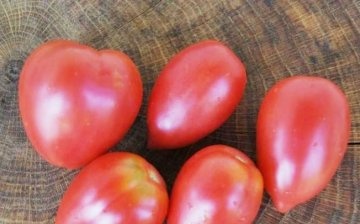
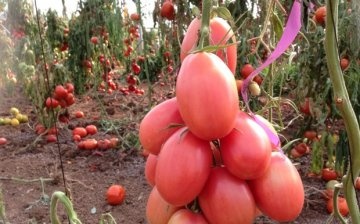

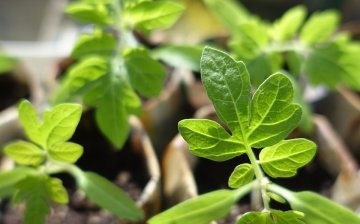
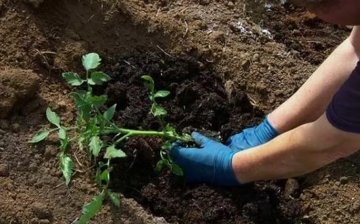
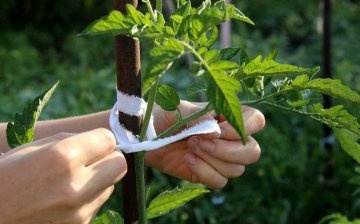
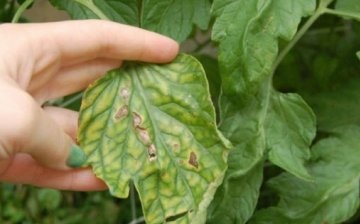
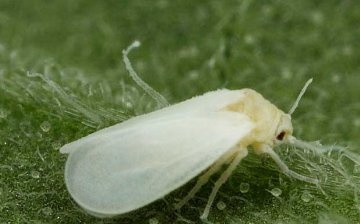
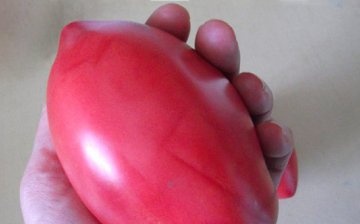









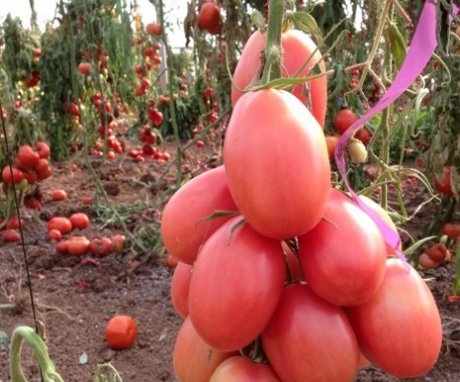
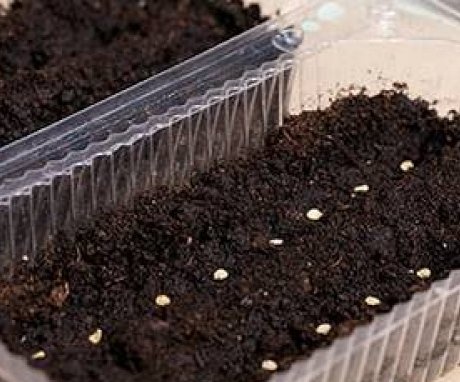
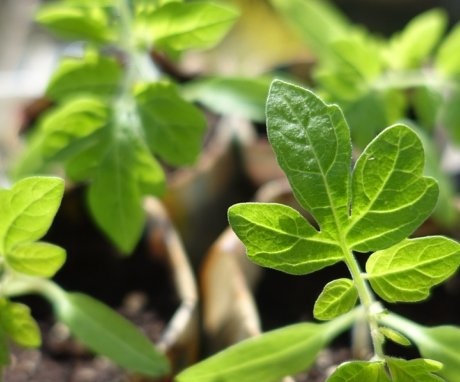
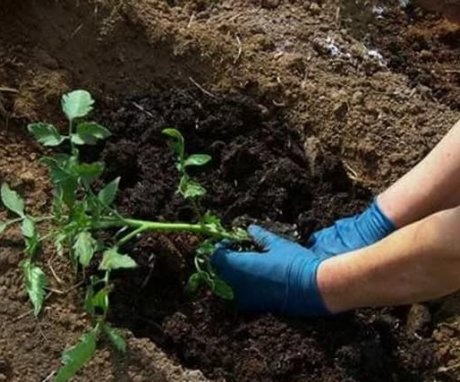
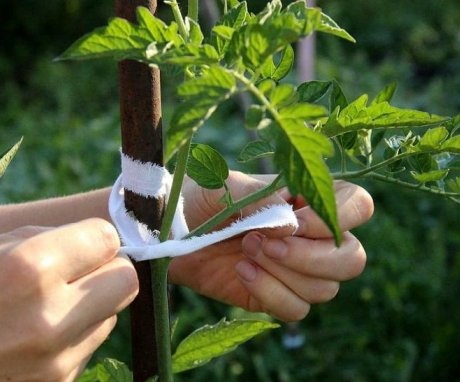

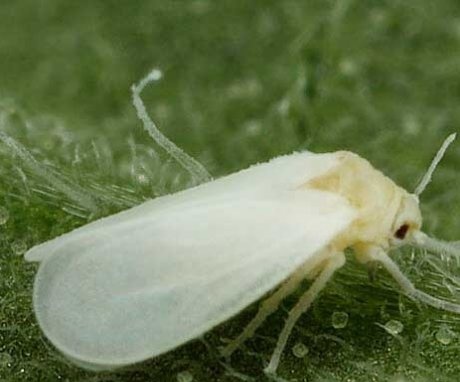
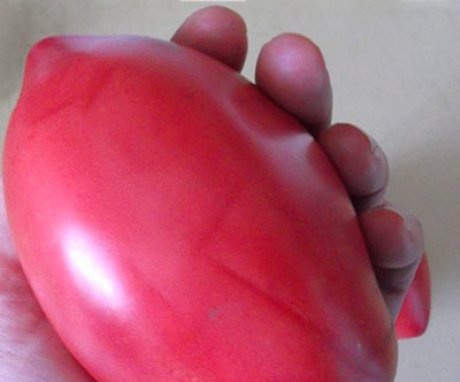
I saw a friend's photo with this wonderful tomato, it seemed to me very appetizing in the photo. And when I tasted it, I realized that my premonitions did not deceive me, well, very tasty and meaty.
Dear masmetall! Be sure to plant a few bushes of such a tomato in the greenhouse and you! A very good and high quality tomato, but also very fruitful. Good in salads!
I consider pink varieties of tomatoes the most delicious and this variety is no exception. Every year I try to plant it, it sprouts differently, sometimes very well, sometimes not, but since those that have sprouted the harvest is always excellent.
I have never counted the brushes of tomatoes on a bush. Usually I leave two or three shoots, but I don't count the number of brushes, because tomatoes do not appear on the branches at the same time. Judging by the photo, the tomatoes are quite dense, about like cream.